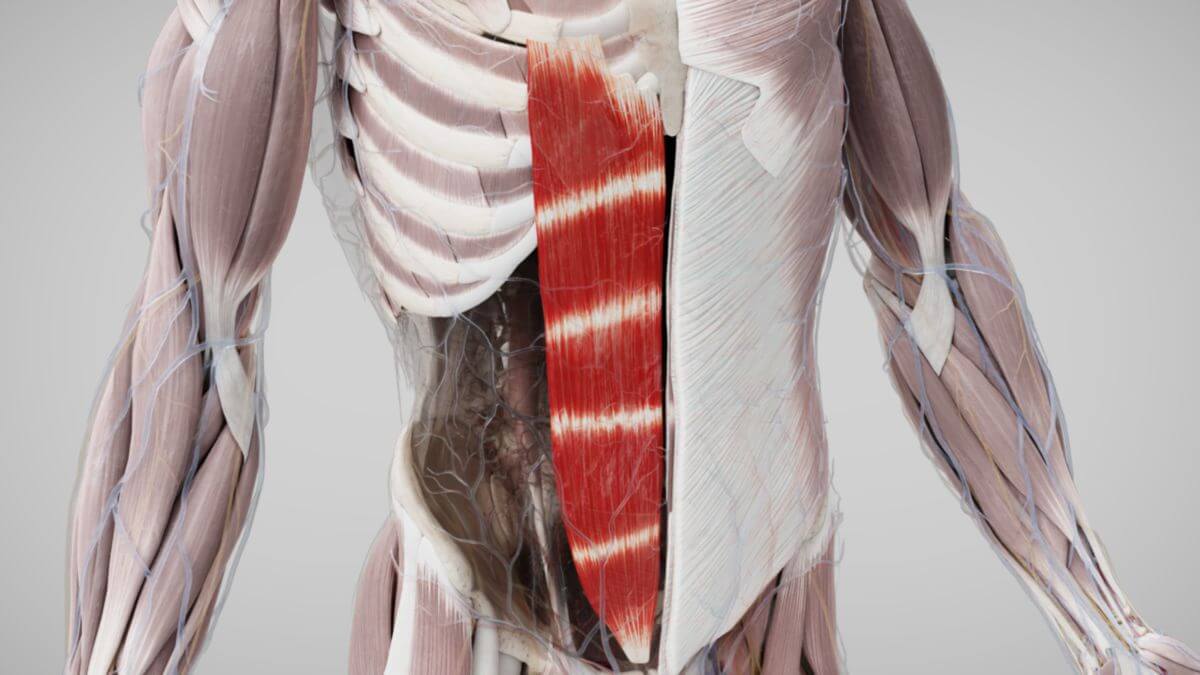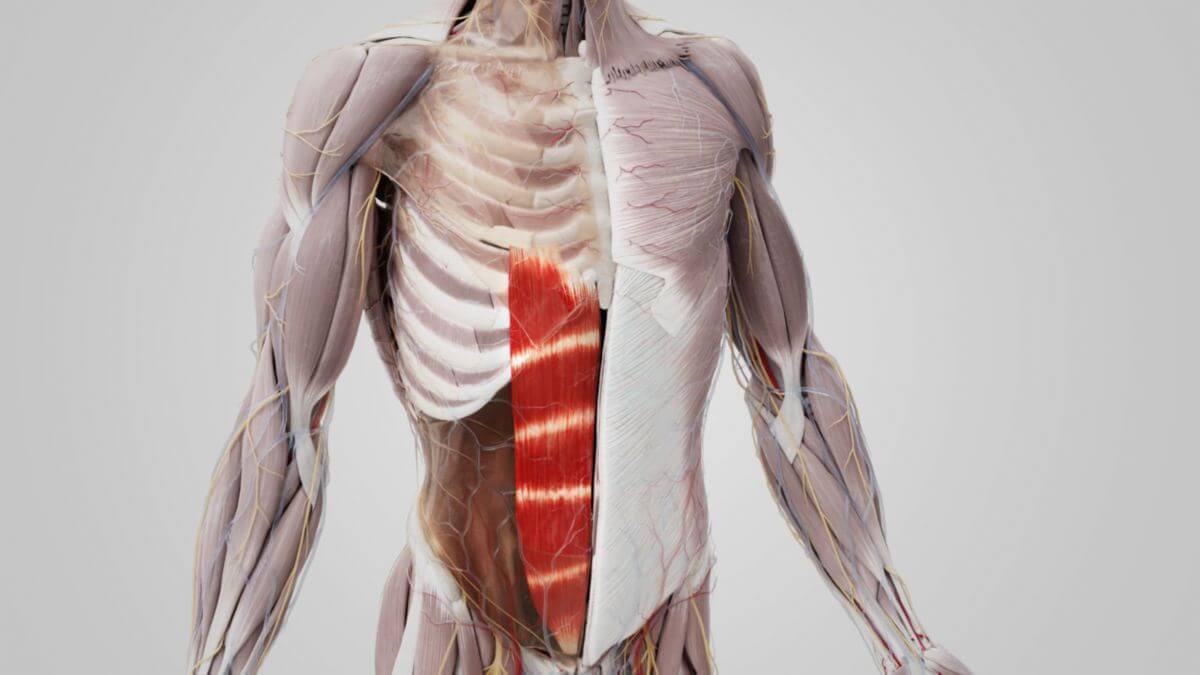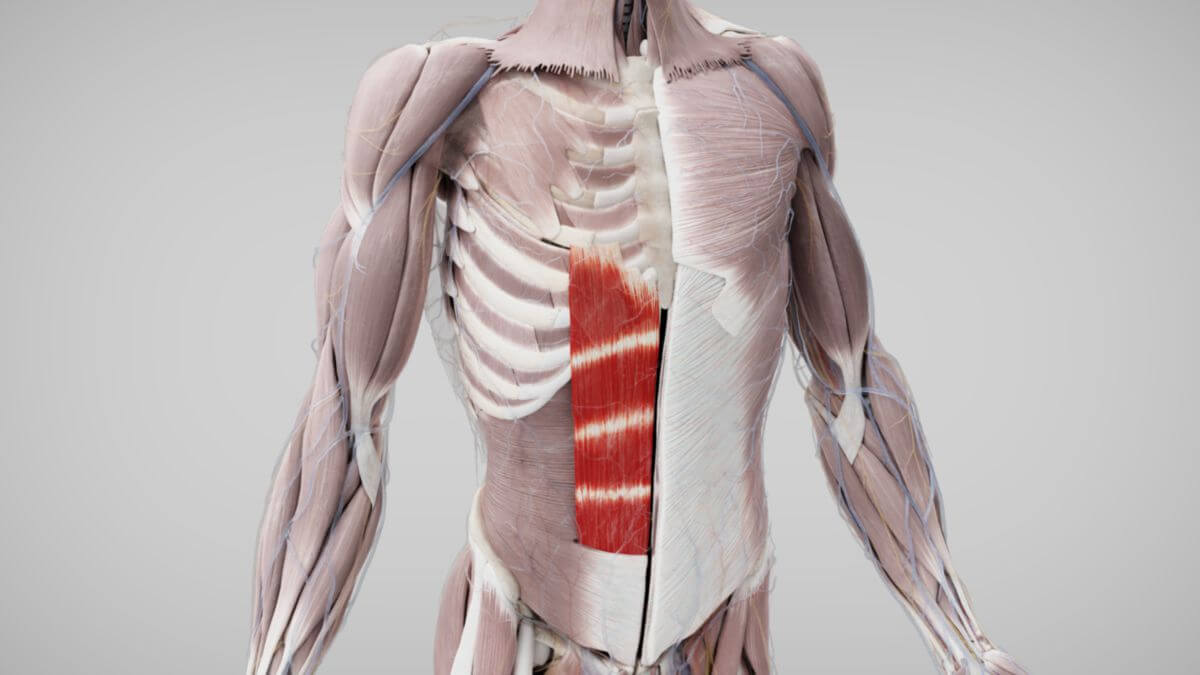Corpus: Rectus abdominis muscle
from Latin: musculus - muscle; rectus - straight; abdomen - belly
1. Definition
The rectus abdominis muscle is a long, vertical, paired skeletal muscle that is part of the anterior or middle abdominal musculature.
2. Dimensions
This muscle spans the entire front of the abdomen, with an average thickness of about 10 mm, though it can reach up to 20 mm in athletes. Its volume is typically around 300 cm³, but in well-trained individuals, it can increase to 500 cm³.
3. Course
3.1. Origin
The rectus abdominis muscle originates in three parts from the anterior surfaces of the cartilages of the 5th, 6th, and 7th ribs. Some of its fibers are also fused with the costoxiphoid ligaments and the xiphoid process of the sternum.
3.2. Attachment
The muscle runs vertically downward, and the right and left sides of the muscle meet at the linea alba. It finally attaches to the superior branch of the pubic bone and the ligaments of the pelvic symphysis.
4. Peculiarities
The rectus abdominis muscle is enclosed on both the ventral and dorsal sides by two broad tendon plates, forming the rectus sheath. The muscle is segmented by 3 to 4 intermediate tendons, which help maintain its position, even when the trunk is tilted sideways. When the muscle is well-developed and subcutaneous fat is minimal, the muscle's outline is visible on the body surface, commonly referred to as a "washboard stomach" or "six-pack."
5. Innervation
The rectus abdominis muscle is innervated by the anterior branches of the 7th to 12th thoracic nerves (Th7-Th12) and the 1st and 2nd lumbar nerves (L1-L2).
6. Arterial supply
The upper part of the rectus abdominis muscle is supplied by the superior epigastric artery, while the lower part is supplied by the inferior epigastric artery. Additional smaller contributions come from the lower anterior intercostal arteries.
7. Function
The rectus abdominis muscle has several important functions. It increases the tension of the abdominal wall, which, in conjunction with the laryngeal muscles and pelvic floor muscles, raises intra-abdominal pressure. This pressure aids in activities such as defecation and childbirth. The muscle also facilitates forward bending of the trunk and flexion of the spine, while pulling the pelvis upward. Acting as an antagonist to the erector spinae muscle, it plays a critical role in maintaining postural stability. Additionally, the rectus abdominis functions as an auxiliary respiratory muscle, particularly aiding in forced expiration during physical exertion or in conditions such as emphysema.
8. Clinic
Fibrous tears in the rectus abdominis muscle can lead to a rectus sheath hematoma, which may result from surgical procedures on the abdomen, trauma, anticoagulation therapy, extreme coughing episodes, or pregnancy. The rectus abdominis muscle is also used in reconstructive surgery to create myocutaneous flaps (TRAM flaps).
9. Source
- Waldeyer - Anatomie des Menschen; 19th, completely revised and updated edition; De Gruyter





